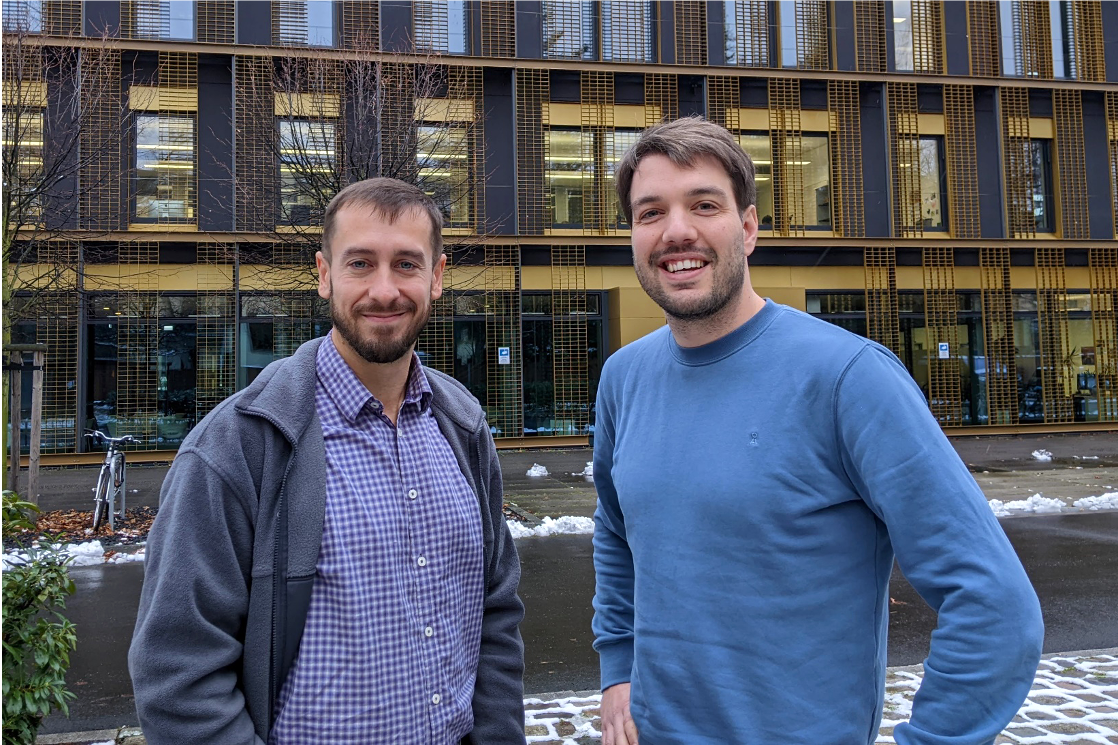
Bile canaliculus with apical bulkheads, containing adherens junctions (magenta) and tight junctions (cyan) Copyright: Bebelman et al. / J Cell Biol (2023) 222 (4) / MPI-CBG
One of the main functions of our liver is to produce bile, a fluid that helps the digestion of food in the intestines. To transport bile, liver cells form a network of tiny tubules (called bile canaliculi). The research lab of Marino Zerial, director at the Max Planck Institute of Molecular Cell Biology and Genetics (MPI-CBG) in Dresden, previously showed that the elongation of these bile canaliculi during liver development requires membranous connections called apical bulkheads. Scientists in the labs of Marino Zerial and Pierre Haas, research group leader at the MPI-CBG and the Max Planck Institute for the Physics of Complex Systems, hypothesized that apical bulkheads could also act as mechanical elements to protect bile canaliculi against elevated biliary pressure.
To test whether apical bulkheads could have such a mechanical role, postdoctoral researcher Maarten Bebelman investigated their structure and composition in more detail using stimulated emission depletion (STED) microscopy. Alf Honigmann, a former MPI-CBG research group leader, was able to help Maarten and his colleagues with this super-resolution microscopy technique. “We found that the two bulkhead halves, of which each comes from the apical membrane of one liver cell, are connected to each other by adherens junctions, which are known to connect cells mechanically. The two bulkhead halves are sealed by tight junctions, which prevent bile from leaking out of the tubes,” explains Maarten Bebelman. In another experiment, the researchers used a laser to cut the apical bulkheads, which caused an immediate expansion of the bile canaliculus, thus demonstrating that the bulkheads are under tension.
With these experimental data, biophysicist Matthew Bovyn, an ELBE Postdoctoral Fellow in the research groups of Marino Zerial and Pierre Haas, developed a mechanical model to calculate how much bulkheads help to withstand increased pressure. “Based on Maarten’s data, our model predicts that apical bulkheads roughly double the pressure that bile canaliculi can hold,” says Matthew. These results show that apical bulkheads are load-bearing structures that enable bile canaliculi to withstand elevated pressure, and suggest that they protect canaliculi during liver development. The research lab of Marino Zerial is currently investigating whether apical bulkheads play a role in liver diseases where bile pressure is high.
Maarten P. Bebelman, Matthew J. Bovyn, Carlotta M. Mayer, Julien Delpierre, Ronald Naumann, Nuno P. Martins, Alf Honigmann, Yannis Kalaidzidis, Pierre A. Haas, Marino Zerial: Hepatocyte apical bulkheads provide a mechanical means to oppose bile pressure. J Cell Biol (2023) 222 (4): e202208002. https://doi.org/10.1083/jcb.202208002
